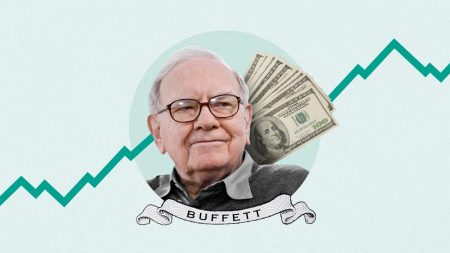Traders typically think of options as a way to quickly multiply their money, and sure, they can do that. But options can also be used to generate income, and they can offer lower-risk ways to provide cash flow in almost any kind of market — whether it’s trending up, down or sideways. The best options strategies for income can deliver attractive returns with reduced risk.
Here are some of the best option strategies for generating income and what to watch out for.
5 options strategies to generate income
1. Covered calls
Covered calls are one of the safer ways to generate income from options, and many IRA owners use it in these tax-friendly accounts. In this strategy, a trader sells a call option for every 100 shares of the underlying asset owned. The trader gets the premium upfront, and as long as the stock stays below the call’s strike price by expiration, the trader gets to keep the entire premium.
What makes this trade safer is that it’s hedged by the stock. If the stock zooms higher, the trader loses only gains above the strike price. That is, the trader loses only money that otherwise would have been made, and does not have to cough up more money to close the trade. And if the strike price is high enough above the stock, the trader may be able to pocket some meaningful gain.
2. Selling puts
Selling put options can be an attractive strategy to generate a nice premium, but you have to be able to withstand the risks. When you sell a put, you’re agreeing to purchase the stock at the strike price until expiration in exchange for a premium. If the stock doesn’t finish expiration below the stock price, the trader keeps the full premium and can sell a new round of puts.
The downside of this trade occurs if the stock falls significantly. The trader may end up having to buy the stock at the much higher strike price, resulting in a major loss, and will need cash in the account or enough margin capacity to pay for the stock. Selling puts acts much like insurance against a stock’s decline, but as the insurer you’ll have to pay up if the stock falls enough.
3. Bear call spread
A bear call spread involves selling a lower-strike call and buying a higher-strike call at the same expiration, with the stock typically at or below the lower-strike call. The sold call generates income, while the purchased call costs money, but it results in a net credit to the trader. This strategy is like setting up a risky strategy — an uncovered call — and then buying insurance in the form of the long call. It’s a lower-return, lower-risk strategy than simply selling an uncovered call. As long as the stock stays below the lower strike by expiration, the trader keeps the full payout.
The potential downside of this strategy is capped, reducing risk. The most a trader can lose here is the difference between the two strike prices minus the net premium. For example, the two options in this spread may have strike prices of $60 and $65, and have paid a net $1.50. At most the trade can lose is $3.50, or the $5 difference minus the $1.50 premium received. The trade generates a net profit as long as the stock stays below $61.50, or the low strike plus $1.50.
4. Bull put spread
The bull put spread uses a similar setup to the bear call spread but uses puts. Here the trader sells a higher-strike put and buys a lower-strike put at the same expiration, with the stock usually at or above the higher-strike put. The sold put generates cash, and the purchased put costs money, but it ends up as a net credit. The return is less than just selling a put, but so is the risk. If the stock stays above the higher strike at expiration, the trader keeps the full payout.
The potential downside of this strategy is limited, reducing risk. The most a trader can lose is the difference between the two strike prices minus the net premium. For instance, the two options in this spread may have strike prices of $40 and $35, and have paid a net $1.25. At most the trade can lose is $3.75, or the $5 difference minus the $1.25 premium received. The trade ends up profitable as long as the stock price stays above $38.75, or the high strike minus $1.25.
5. Iron condor
The iron condor is an advanced options strategy that combines a bear call spread (strategy No. 3) and a bull put spread (strategy No. 4). So it involves four separate legs, making it a complex trade to set up. The iron condor pays off best when the stock moves mostly sideways, finishing expiration close to its price when the trade was set up. Because you’re effectively setting up two spread trades here, the iron condor can offer basically twice the premium as either of its component trades.
That double premium means the iron condor pays off nicely if the trader is right, but the extra premium also helps offset any loss if the stock makes a big move before expiration. If the stock stays mostly flat until the expiration, the trader collects the full premium from both sides of this trade. But if it moves substantially in one direction, one side of the trade expires worthless, while the other may max out its loss. However, the extra premium payment cushions against this loss and gives the trader extra room for the stock to move while still generating a profit overall.
The best brokers for options trading can help reduce your costs on complex, multi-leg trades.
Risks of trading options for income
Generating income from options strategies is a generally lower-risk strategy than trying to multiply your money through buying naked calls and puts. That certainly doesn’t mean it’s low risk, though, especially in certain scenarios. Here are a few key things that traders need to know.
1. Know the maximum downside on your strategy
Some income-generating options strategies — short puts and uncovered calls, for example — offer the potential for substantial loss. You can lose much more than you ever receive from the trade, and in the case of uncovered calls, the potential loss is uncapped. Make the wrong trade and you can be wiped out. The potential loss on short puts is capped at the strike price * 100, but that still means you could lose many times the premium income if the stock plummets.
2. Avoid over-wagering
It can feel like free money to sell options. You generate immediate income, while actually living out the risks comes later on. So it’s easy to discount the real risks when you’re selling options for income, and you may tell yourself that you’re not really going to lose. But the market can turn quickly, and if you have the wrong position, your “free money” can quickly become a loss.
That’s why it’s important to not over-wager and extend yourself too far. If you’re short puts, you may need to buy the stock if it moves lower. That could wipe out the comparably modest gain from selling the puts for income, and leave you in a much worse position. Hedged strategies such as the bear call spread can help alleviate some of the risk, but that protection reduces the overall return compared to simply selling an uncovered call without that protection.
3. Good trades may not always be available
Traders have their favorite “go to” stocks and options, ones that they understand well and think that they can turn to reliably for a profitable trade. That’s useful knowledge to have as a trader. But it’s important to not force your desire to generate income on a trade setup that doesn’t offer the necessary income to offset the risk, even ones with stocks and options you know well.
If you’re consistently taking risks without being paid enough for them, eventually the outcome will turn against you. So don’t force the trade when it doesn’t fit your process or generate enough return. Tomorrow may offer just the trade you’re looking for, and then you’re making cash again.
Bottom line
The strategies above can generate attractive income in a variety of scenarios, whether stocks are moving up or down or even just treading water. But it’s vital to know that these strategies aren’t free money, and that you can lose significant money, though often your loss is capped.
Editorial Disclaimer: All investors are advised to conduct their own independent research into investment strategies before making an investment decision. In addition, investors are advised that past investment product performance is no guarantee of future price appreciation.
Read the full article here












